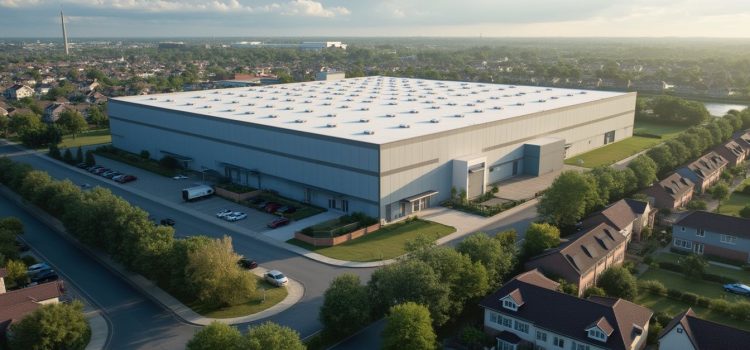
This is a free excerpt from one of Shortform’s Articles. We give you all the important information you need to know about current events and more.
Don't miss out on the whole story. Sign up for a free trial here .
What’s the real cost of our digital convenience when it comes to power consumption? How are local communities bearing the burden of rapidly expanding data centers?
The environmental impact of data centers has reached a critical point, with AI technologies driving unprecedented energy demands. From small towns facing increased utility bills to global concerns about carbon emissions, the digital revolution’s footprint extends far beyond server rooms.
Keep reading to discover how tech giants’ green promises stack up against reality, and what innovative solutions might shape our digital future.
The Environmental Impact of Data Centers
AI’s data center boom is driving an energy surge that’s straining power grids, burdening local communities, and undermining tech giants’ green pledges. We’ll look at the environmental impact of data centers, how some local communities are affected, and what the future might hold.
Current Landscape and Trends
Roughly 7,000 data centers power global technology needs, housing thousands of servers that support bank transactions, video streaming, and online shopping. While their power consumption remained stable at 200 terawatt-hours annually from 2015 to 2019 despite tripling workloads, efficiency gains have slowed since 2020. With AI’s rise, electricity demand is projected to surge 160% by 2030.
AI-related tasks are particularly energy-intensive, with a ChatGPT query using almost 10 times the electricity of a Google search. A single data center can consume up to 18 megawatts—enough to power 14,400 homes—with larger campuses using up to one gigawatt, comparable to powering most of San Francisco.
Financial incentives have fueled rapid expansion in some US regions, with numbers doubling over the past decade as investors, local governments, and utilities seek to profit from the AI boom. The Covid-19 pandemic’s push toward remote work has further increased demand.
Impact on the Environment
US power demand is projected to grow by 2.4% between 2022 and 2030, with data centers accounting for 0.9 percentage points. European demand could surge 40% to 50% by 2033. This growth reveals significant contradictions:
- Despite tech giants’ commitments to eliminate emissions by 2030, they’re increasing fossil fuel use to enable expansion.
- Utilities are delaying coal-fired power plant phase-outs and extending fossil fuel facilities’ lifespans.
- Even when tech companies use renewable energy, they consume the limited available supply, forcing utilities to expand fossil fuel use elsewhere.
Training a single AI model can produce emissions equal to 626,000 pounds of CO2—five times an average car’s lifetime emissions. A single data center uses electricity equivalent to 50,000 homes, and by 2030, data centers are expected to double their electricity use. The cloud’s carbon footprint now surpasses the airline industry, generating roughly 2% of global emissions.
Tech firms contend that AI’s environmental benefits outweigh increased energy use, citing improvements in power grid efficiency and emissions monitoring. However, research shows data centers’ emissions are 660% higher than reported. Without radical changes in AI system development, the technology’s energy consumption could surpass the entire global workforce.
Impact on the Community
In Northern Virginia, home to the world’s largest concentration of data centers, more than one in five residents live within a mile of these digital warehouses. They face constant noise from cooling systems, which residents compare to never-ending leaf blowers. In drought-prone areas, these cooling systems strain local water resources.
The financial impact extends beyond immediate neighborhoods. In Georgia, over 50 data centers have increased average household electricity bills by nearly $200 annually as tech companies recoup infrastructure investments. While residential customers face higher rates, data centers often receive discounts for their enormous power consumption.
Communities’ attempts to push back have yielded mixed results. While some have successfully blocked new construction, tech companies have adapted by:
- Using nondisclosure agreements to prevent local officials and workers from sharing information until public input opportunities have passed
- Launching public relations campaigns promising “water positive” operations and renewable energy use—goals that remain years from realization due to technological and infrastructural limitations
Future Developments
Tech giants are pursuing innovative solutions for zero-emissions power sources. Microsoft’s plan to reopen Three Mile Island—site of the worst US nuclear accident—by 2028 exemplifies this trend. The unprecedented deal includes purchasing 100% of the plant’s power for 20 years but faces significant challenges:
- Safety concerns
- Regulatory hurdles
- Questions about federal tax break applicability
- Criticism over potential unfair cost distribution between ratepayers and taxpayers
- Debates about using public resources for private tech expansion
This initiative highlights the industry’s quest for zero-emissions electricity while raising critical questions about energy equity and environmental safety in the era of AI expansion.

Want to fast-track your learning? With Shortform, you’ll gain insights you won't find anywhere else .
Here's what you’ll get when you sign up for Shortform :
- Complicated ideas explained in simple and concise ways
- Smart analysis that connects what you’re reading to other key concepts
- Writing with zero fluff because we know how important your time is






